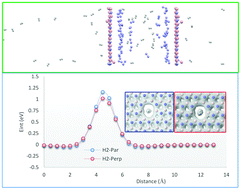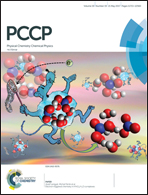Hydrogen purification performance of a nanoporous hexagonal boron nitride membrane: molecular dynamics and first-principle simulations
Abstract
Membranes have attracted much attention for the efficient separation of gas mixtures, due to their specific structural and unique properties. In this work, density functional theory (DFT) and molecular dynamic (MD) simulations have been employed to evaluate the performance of nanoporous hexagonal boron nitride (h-BN) monolayers for hydrogen purification. Various porous membranes were designed, and full structural relaxation was carried out by using DFT calculations and then MD simulations to investigate the H2 purification performance of the nanoporous h-BN membranes. It was found that the selectivity for H2 gas over N2 gas was highly sensitive to the type and width of the pores. The h-BN membrane containing pores with short and long sides both of about 3 Å (pore 1B-3N) demonstrated optimal selectivity for H2 molecules, while the permeability of the pore 5B-5N + 4H membrane (short side of about 4.4 Å) was much higher than that of other counterparts. Furthermore, DFT calculations were performed to validate the MD simulation observations as well as to explain the selectivity performance of the most desirable pore membrane. We demonstrated that the 1B-3N pore is a far superior membrane to other counterparts and exhibits an excellent potential for applications in hydrogen purification, clean energy combustion, and the design of novel membranes for gas separation.



 Please wait while we load your content...
Please wait while we load your content...